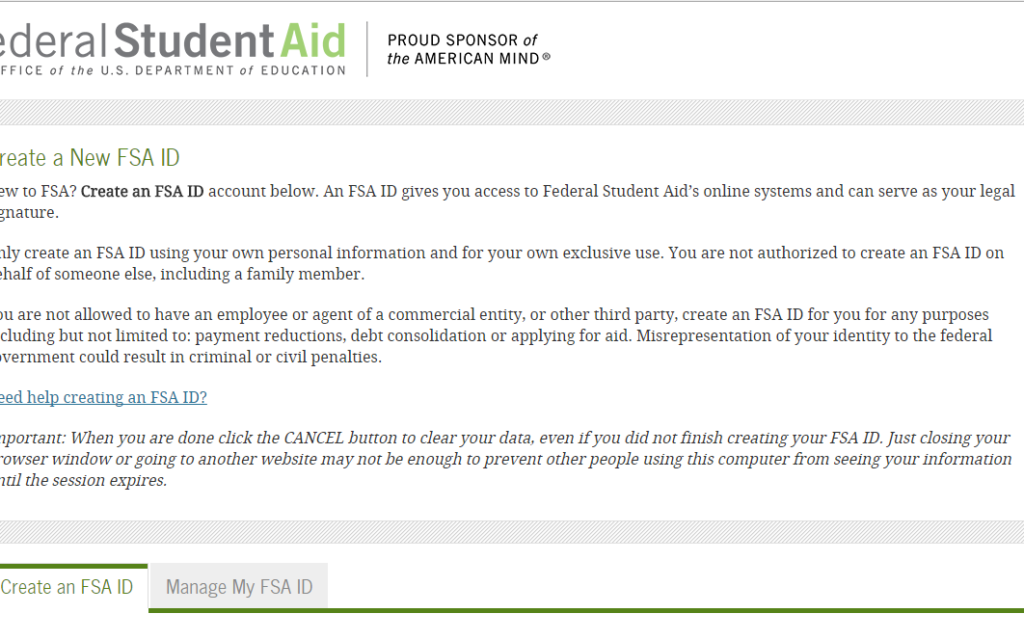Clock Is Ticking for College Financial Aid
With the FAFSA process starting in October instead of January, high school seniors are getting aid offers.
The cost of college is quite high and seems to increase each year. In fact, some students don’t apply to certain colleges because of the sticker price, which includes tuition, room and board, activity fees, and personal expenses, along with a few other items.
The price to attend college is not like it was for parents long ago.
If you are the parent of a student who is a senior in high school, have you obtained your Federal Student Aid ID? Has your student obtained his or her FSA ID?
Get The AJT Newsletter by email and never miss our top stories Free Sign Up
If the answer to either of those questions is no, you are already a little behind in the financial aid process. Remember that the student and the parent should individually get IDs. Otherwise, you could wind up with a problem. How do you receive an ID? Go to fafsa.gov.
Beware of scams. Never get caught paying for the Free Application for Federal Student Aid via the Internet with a party whom you do not know or who has not been referred by a friend who used that person or firm. Look at the website carefully.
There are competent advisers who can help you prepare the FAFSA and even assist you in maximizing your financial picture for aid. Know with whom you are communicating and working with in this process.
What if you feel you can afford an expensive college? Then you should not bother to complete the FAFSA, right?
Wrong. You never know what could happen with a particular college. Yes, even families with six-figure incomes have obtained financial aid. Families have individual circumstances.
Applicants this year will use your 2016 parent tax filing. The typical student is a dependent. If a high school student lives in a tent in his home’s back yard and does not talk to his parents, he is still a dependent.
The good news is that parents can use the IRS DRT (Data Retrieval Tool) to transfer information from a 2016 tax return right into the FAFSA. For security reasons, the information will be transferred but will no longer be displayed. You will only know that the information was transferred.
Eventually, after completing the FAFSA, you will receive a Student Aid Report. This SAR includes an expected family contribution. The EFC is a key to receiving financial aid.
Let’s say you are not eligible for federal student aid. Don’t be sad, for that is only federal aid. The college has more aid available than federal aid. Each school to which you apply receives the same FAFSA as long as you put down that college to receive the form.
Contact the financial aid offices at colleges with questions that you have or circumstances that are unique to your family.
You think you have completed your responsibilities regarding the FAFSA by filling out and submitting the form. Sorry, you are not finished. There is more to do in the financial aid process.
After submitting the FAFSA, you will receive a confirmation page. The government does not award you money; the colleges have that task.
What is your EFC? That is a key number for colleges when figuring out if you are in need and, if so, the amount of financial aid. Some colleges meet 100 percent need. Some meet 60 percent of need. Others meet everything in between or less.
Although many scholarships are available, it takes researching them and applying. Also, deadlines are crucial.
Colleges have scholarships available. For some of them, you need not apply; the college keeps them in mind when reviewing your application. For others, you need to apply.
All that takes a little research, but remember that most money comes from the colleges themselves.
After submitting your application and FAFSA, when will you hear from a college with its decision? Because Oct. 1 is when the FAFSA application becomes available — pushed back from the old date of Jan. 1 — colleges should be able to make earlier financial decisions.
But you never know when you will hear from a college. Some colleges make quick decisions; others wait awhile until they are ready. It’s November, and I counsel students who already have been awarded good financial packages from the colleges to which they have applied this early in their senior year.
One or more of the colleges to which you applied wants the CSS/Financial Aid Profile. Another form to complete? This application is available at student.collegeboard.org/profile. You don’t complete this application unless the college wants it.
Few public universities want the profile. A guideline, but not an absolute rule, is that the most competitive private colleges want this profile. The website for the profile lists the participating colleges.
The profile can be completed at cssprofile.collegeboard.org. There is an initial application fee and a charge to send the report to each college. But if the college wants it, you have to pay up.
Remember, the FAFSA is free all the way. But there is help available if you need it. The websites for the FAFSA and CSS/Financial Aid Profile also have information.
Important telephone numbers are FAFSA, 800-433-3243, and the profile, 844-202-0524.





comments